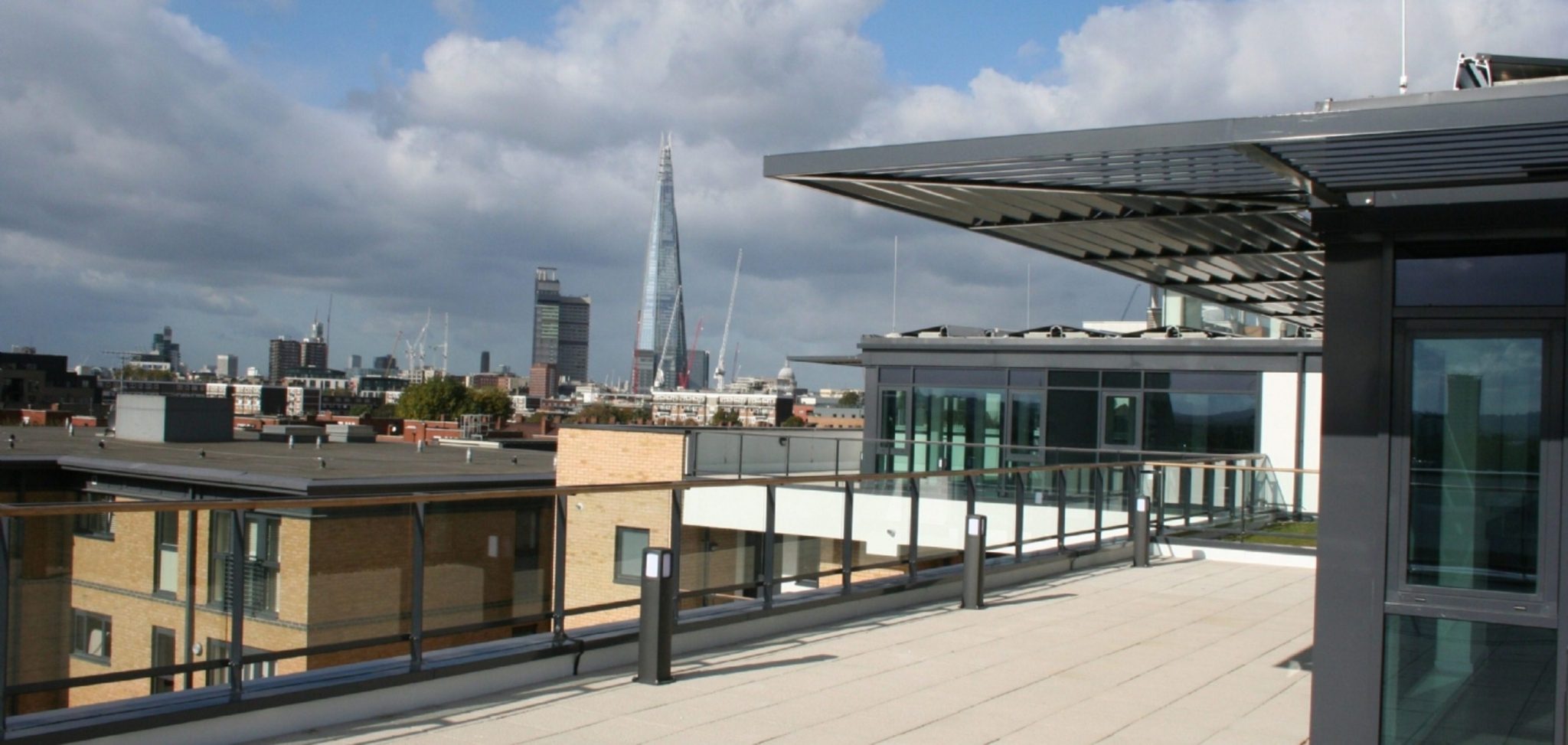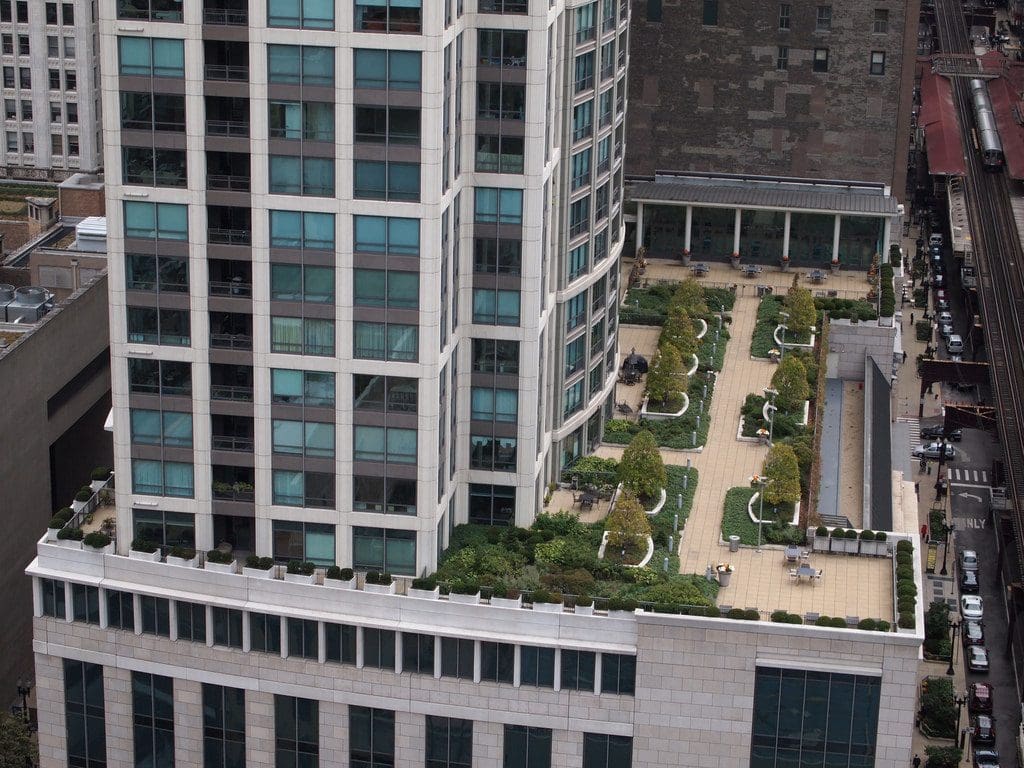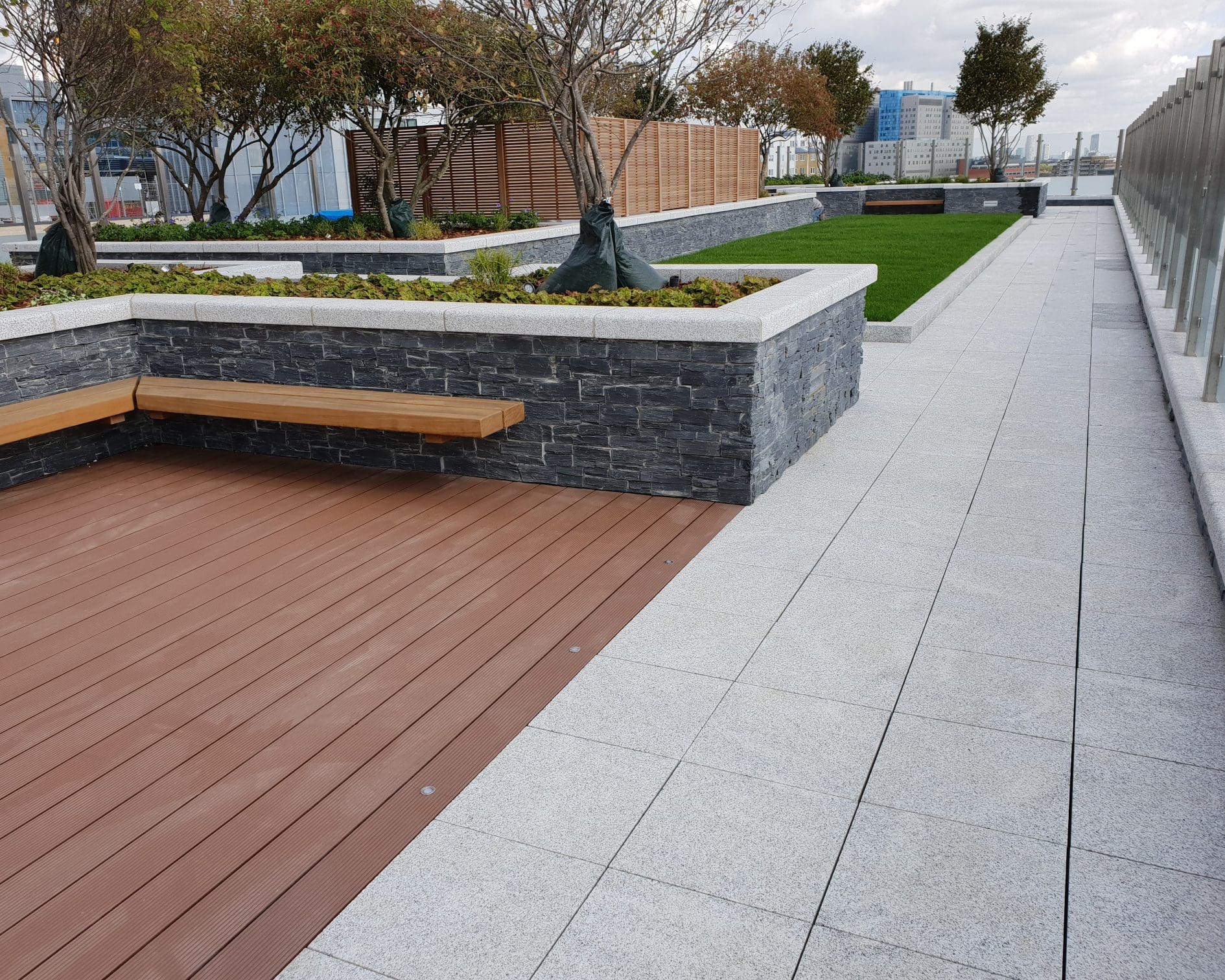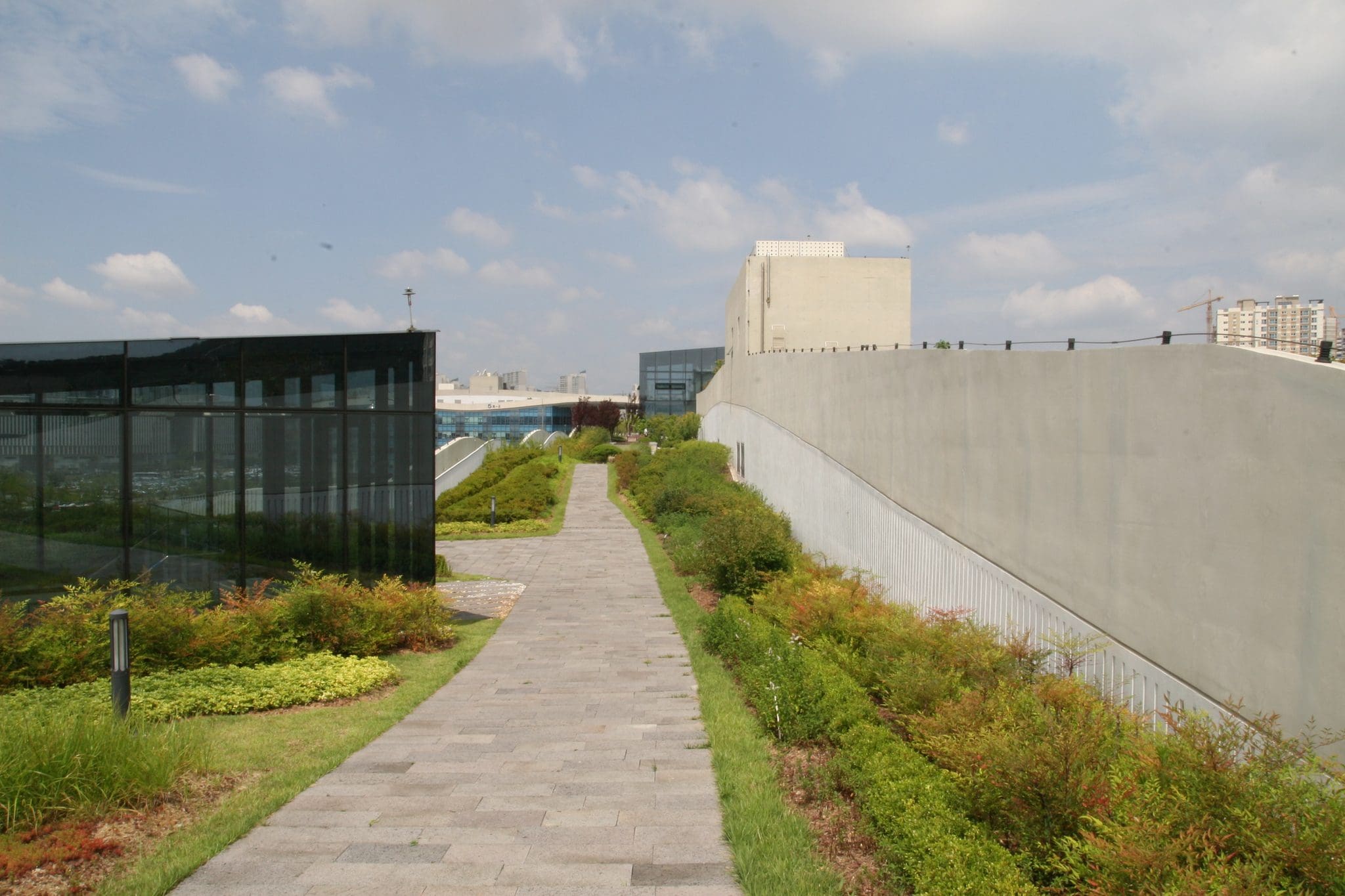People continue to flock to live in cities all over the UK. The closeness of amenities like shops, restaurants and gyms far outweighs the negatives of city life such as pollution, noise and smaller living spaces.
So with demand continuing to soar and real estate prices continuing to rise, developers increasingly include balconies, roof terraces and courtyards in their building plans to offer closeness to the city with as much space as possible.
And landscape architects, developers and home owners continue to find ways to make these outdoor spaces inspirational: places where you want to spend time. The following roof terrace and rooftop deck trends show no signs of disappearing any time soon.
Utilising every square foot
London sets the standard for the rest of the UK cities with roof terraces, with extensive urban regeneration incorporating the maximisation of roof spaces.
For instance, the new Battersea Power Station developments in the South of London feature rooftop plots and allotments for residents to grow their own food.
Indeed, recent polls suggest an outdoor space can add as much as £90,000 to the value of a home in London, so it’s no wonder people use outdoor space to its full capacity, with small gardens, outdoor kitchens with dining space, hot tubs, lighting designs and water features.
With roof terraces, podiums and balconies, support solutions for paving and decking like pedestals work well, offering strength and longevity to patios and decks, while also allowing for better drainage and simple maintenance access for wiring and plumbing.
Modernism
Modernism is nothing new, but for roof terraces, the modernist style is set to continue growing in popularity.
Modernist roof gardens maximise on perceived space by using open spaces. They link the inside to outside seamlessly using sliding doors and glass panes.
They might bring the outdoors in but carrying the flooring from outdoors in, whether that’s a nice smooth porcelain tile or a natural stone slab.
Roof terraces that adhere to modernism reject ornament, instead opting to add detail and impact with sculptural plants and clean lines. Colours are muted, coming from stone, timber and concrete, with shades of green from trees and robust plants, all set in contemporary planters.
It’s always simple, unfussy and functional.
Ecological spaces
Cities are usually quite polluted spaces so amid mounting environmental concerns, making roof terraces more ‘green’ has become increasingly common.
In and of themselves, roof terraces offer the obvious green benefit of additional insulation: lowering summer temperatures and protecting from the cold in winter.
But in recent years, roof terraces have taken a step in the green direction with greenroof trays, trees, plants and ‘living walls’ incorporated into schemes, improving eco-credentials by – for example – reducing rainwater run-off and encouraging biodiversity.
However, by adding more greenery, roof terraces also adopt a garden-like feel, which can completely transform a space.
Start the process of transforming any roof, balcony or podium into a roof terrace with paving or decking pedestals from RynoSupport, which can be laid directly on the roof membrane, saving time and expense. Our premium quality systems can provide a solid foundation to accommodate the most adventurous and unique uses of terraced spaces.
The question isn’t: is there space, it’s what do you do with it?
References
https://www.bbc.co.uk/news/uk-44482291
https://www.houzz.com/ideabooks/22293131/list/elements-of-modernist-landscapes-classic-and-new








